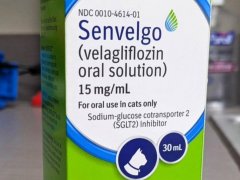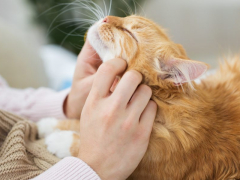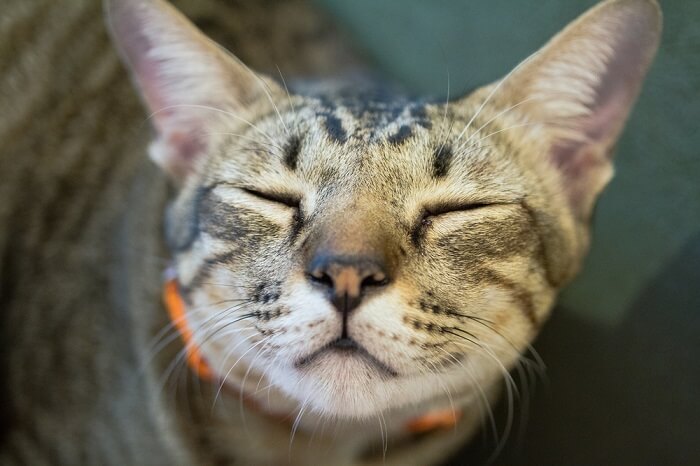
Chlorambucil is a chemotherapeutic and immunosuppressive agent that may be used in cats as an add-on medication for the treatment of inflammatory bowel conditions as well as certain types of cancers.
Chlorambucil for Cats Overview

In this article you’ll learn more about what chlorambucil may be used for in cats, potential side effects to watch for, a general understanding of dosing, and some frequently asked questions.
About Chlorambucil for Cats
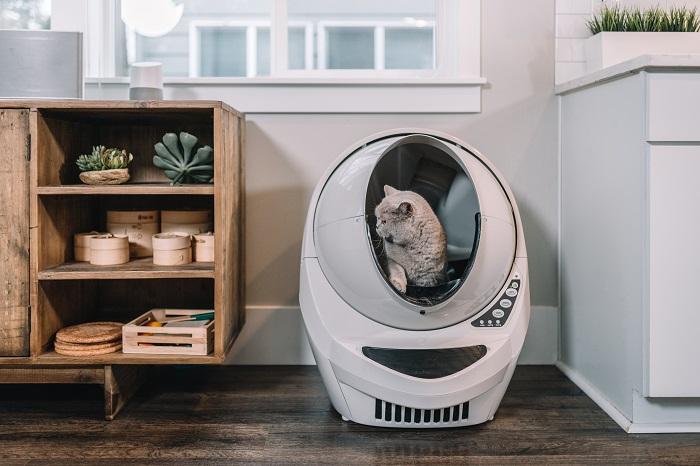
Chlorambucil is the generic name for the antineoplastic (anti-tumor/cancer) and immunosuppressive drug with the brand name Leukeran, manufactured by Aspen Global. While it is often indicated in cats with certain medical conditions, it is not FDA approved specifically for cats.
While the term Leukeran and chlorambucil may be used interchangeably when referring to this drug, the 2mg tablet size of Leukeran may not allow for the most accurate dosing in most cats. For this reason, chlorambucil is often prescribed for cats through a compounding pharmacy.
Chlorambucil is considered a chemotherapeutic agent and has shown to have teratogenic effects on developing fetuses and can be irritating to skin, eyes, and the respiratory tract.
Therefore, gloves always need to be worn when administering it and when disposing of waste of a kitty being treated with it. Any tablets should typically not be split or crushed.
What Does Chlorambucil Do for Cats?

Chlorambucil is most often used in veterinary medicine for treatment of cats with certain types of lymphoma or lymphosarcoma, especially of the gastrointestinal system.
Chlorambucil is classified as a nitrogen mustard derivative antineoplastic (anti-tumor/cancer) and immunosuppressant drug.
Nitrogen mustards were first discovered around the time of World War I. While first investigated as a potential chemical warfare agent, they were instead applied as a potential treatment for lymphoma, because of their effects on white blood cells and the bone marrow.
Their success in this field has expanded their use for treating many types of cancers, both in humans and in pets.
Also Read: Cancer In Cats: Causes, Symptoms & Treatment
Nitrogen mustards exert their effects on cancer cells through a process called alkylation. Alkylation damages the DNA strands within cells, which keeps them from dividing/multiplying, leading to cell death.
In general, cancer cells divide much more rapidly than regular cells do, making them more susceptible to a drug that targets and kills rapidly dividing cells.
Chlorambucil is most often used in veterinary medicine for treatment of cats with certain types of lymphoma or lymphosarcoma, especially of the gastrointestinal system. Lymphoma is generally a cancer involving lymphocytes, which are a type of white blood cell and can be found in nearly any tissue of the body.
Chlorambucil may also be used for its immunosuppressive properties as an adjunctive, or add-on medication for treating certain advanced cases of inflammatory bowel disease conditions in cats. It may often be used in conjunction with a steroid like prednisolone.
Side Effects of Chlorambucil for Cats
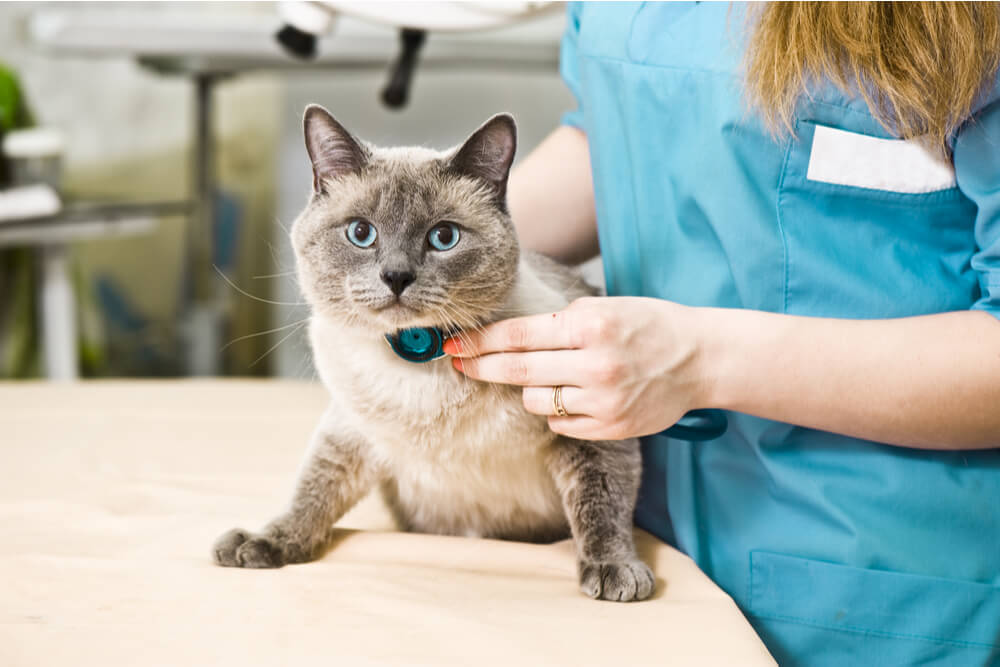
Some side effects of Chlorambucil can include effects like low red blood cell and low white blood cell counts.
Drugs like chlorambucil target rapidly dividing cells, like cancer cells. However, there are normal cells in the body that divide and turnover more rapidly than others. This can include cells of the GI tract. In people and certain breeds of dogs, this can also include hair.
Common visible side effects of chlorambucil in cats therefore may include digestive upset signs like vomiting and diarrhea.
In cats, hair loss from the use of chemotherapy drugs typically does not occur. This is because cats do not have continuously growing hair as people do.
Chlorambucil does affect the bone marrow (which can be important for some cancers affecting the bone marrow). As such, effects like low red blood cell (anemia) and low white blood leukopenia) cell counts can occur, as well as low levels of platelets which are used by the body for blood clotting.
Severe signs in a cat caused by these effects may include weakness, lethargy, pale gums, poor appetite, and bruising. Cats with low white blood cell counts may also be more prone to developing secondary viral or bacterial infections, developing a fever.
Chlorambucil is metabolized by the liver, so it should be used cautiously in cats with any signs of liver dysfunction.
For these reasons (including effects on red cells, white cells, platelets, and liver function), it is often required for cats on chlorambucil to have regular blood work panels performed, chiefly including a complete blood count (CBC). Most of the time, effects on red and white cells and platelets occur early on and are reversible with medication adjustments.
If your kitty has been recently started on chlorambucil, these recheck blood work appointments are extremely important to keep and should not be skipped.
Because of its effect on the immune system, chlorambucil may interfere with the effectiveness of vaccines and adverse vaccine effects may be enhanced. For some pets on chemotherapy, adjusting scheduling for certain vaccines or discontinuing certain ones, may be discussed, depending on the risks and benefits involved.
Chlorambucil has been documented to cause teratogenic effects, or mutation effects on developing embryos/fetuses. This medication should be avoided in pregnant or nursing queens, unless the benefits outweigh potential costs.
The teratogenic effects, along with potential for irritation of skin, eyes, and the respiratory tract, is the main reason that human caregivers should always wear gloves and handle chlorambucil cautiously when administering to a kitty. Gloves should also be worn when disposing of cat litter or otherwise cleaning up after a kitty under treatment with chlorambucil.
If you have any concerns for potential toxicity resulting from use of chlorambucil in your cat, it is always best to contact your primary veterinarian, veterinary oncologist, the ASPCA Animal Poison Control Center (1-888-426-4435), or Pet Poison Helpline (1-855-764-7661) for further advice.
Chlorambucil for Cats Dosage
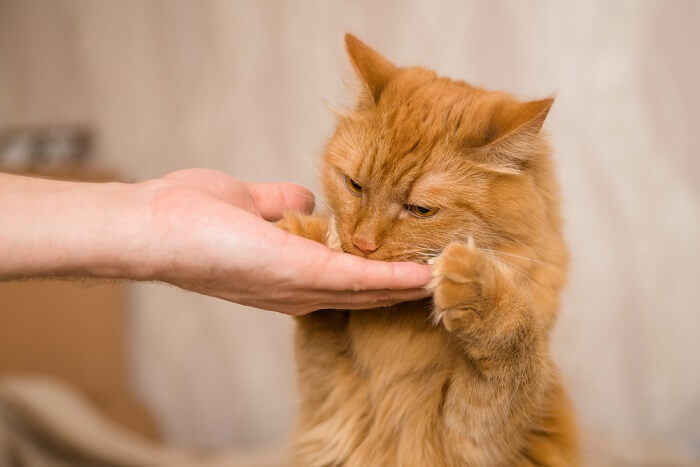
Because of its health concerns as a hazard, chlorambucil tablets should never be broken or crushed, it should instead, if at all possible, always be given as a whole tablet.
A specific dose for chlorambucil can’t be provided, as each dosage for a cat is catered both to the individual cat as well as particular cancer or other condition being treated.
However, it’s important to understand a few common things about dosing with chlorambucil.
Chlorambucil’s brand Leukeran only comes in 2mg tablet size. Because of its health concerns as a hazard, if handled improperly, chlorambucil tablets should never be broken or crushed.
If at all possible, it should always be given as a whole tablet. For this reason, and because the 2mg tablet size is not practical for many cats, it is common for this drug to be prescribed for a kitty through a compounding pharmacy.
Chlorambucil is a drug often dosed using what is called pulse dose therapy and is not typically dosed as an everyday medication. There are some protocols using it once every other day or every third day. There are others that call for it to be used for a couple days in a row, but only on certain weekly interval cycles.
Dosing for chlorambucil should only be under the guidance of a veterinarian. It is also common, especially when treating cancer, to have any treatment protocols determined through the expertise of a board certified veterinary oncologist.
Treating some types of cancers requires combinations of drugs used together and veterinary oncologists are the best at understanding the right protocols to use and how to adjust them when needed.
Conclusion
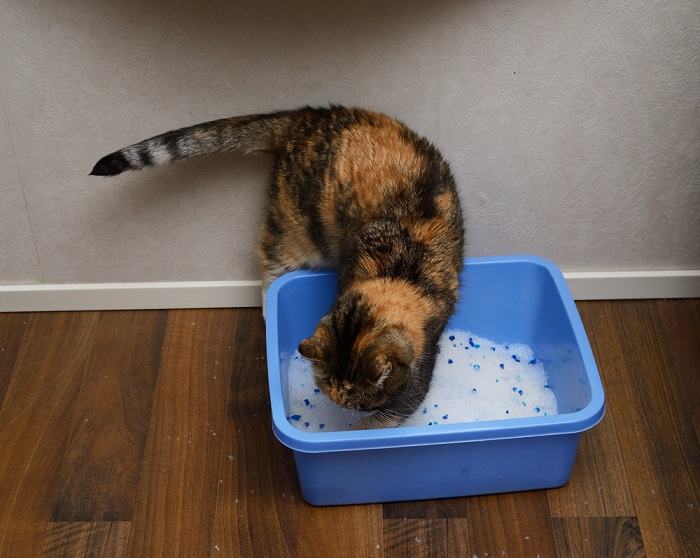
Chlorambucil can be a very helpful medication to use when indicated for certain types of cancers or refractory inflammatory bowel disease conditions in cats.
However, it often must be compounded, requires certain precautions to be taken when giving it to a kitty, and can be hazardous to people not taking the right precautions.
If you feel your kitty may benefit from chlorambucil, always make sure to discuss thoroughly with your veterinarian, who may also refer you to a veterinary oncologist for further discussion in some cases.
Drug Dosing Disclaimer: We are only able to provide doses for medications that are FDA approved for use in cats and only as the label guidelines dictate. For medications that are used off-label we can only provide guidelines and safety information for use. Safe and appropriate dosing for off-label medications can only be determined by a primary care veterinarian.
We encourage you to work with your veterinarian to determine if a particular medication is appropriate for your cat. Changing or adjusting a dose for your cat on your own without consulting with a veterinarian can carry risk. We do not encourage use of medications prescribed for human use in pets without first consulting with a primary care veterinarian.
Frequently Asked Questions
How long does it take for chlorambucil to work in cats?
Chlorambucil is a drug considered to be rapidly and pretty completely absorbed with oral administration, reaching peaks within about 1 hour.
However, practically, it may take a couple weeks to recognize signs of improvement for cats with gastrointestinal cancer or refractory inflammatory bowel conditions. The first few weeks is also the most important period of time to monitor for potential side effects and be checking blood work parameters.
Is chlorambucil a chemotherapy?
Yes, chlorambucil is generally considered to be a chemotherapeutic. Chemotherapy simply refers to using a chemical compound to treat a disease. However, in recent decades, this term has been applied mostly to those types of drugs used to treat cancers by killing rapidly dividing cancer cells.
In this sense, chlorambucil is definitely considered a chemotherapeutic, though it is not always exclusively used to treat cancer. It has immunosuppressive effects that may be useful for some other diseases involving the immune system, like inflammatory bowel disease in cats.


